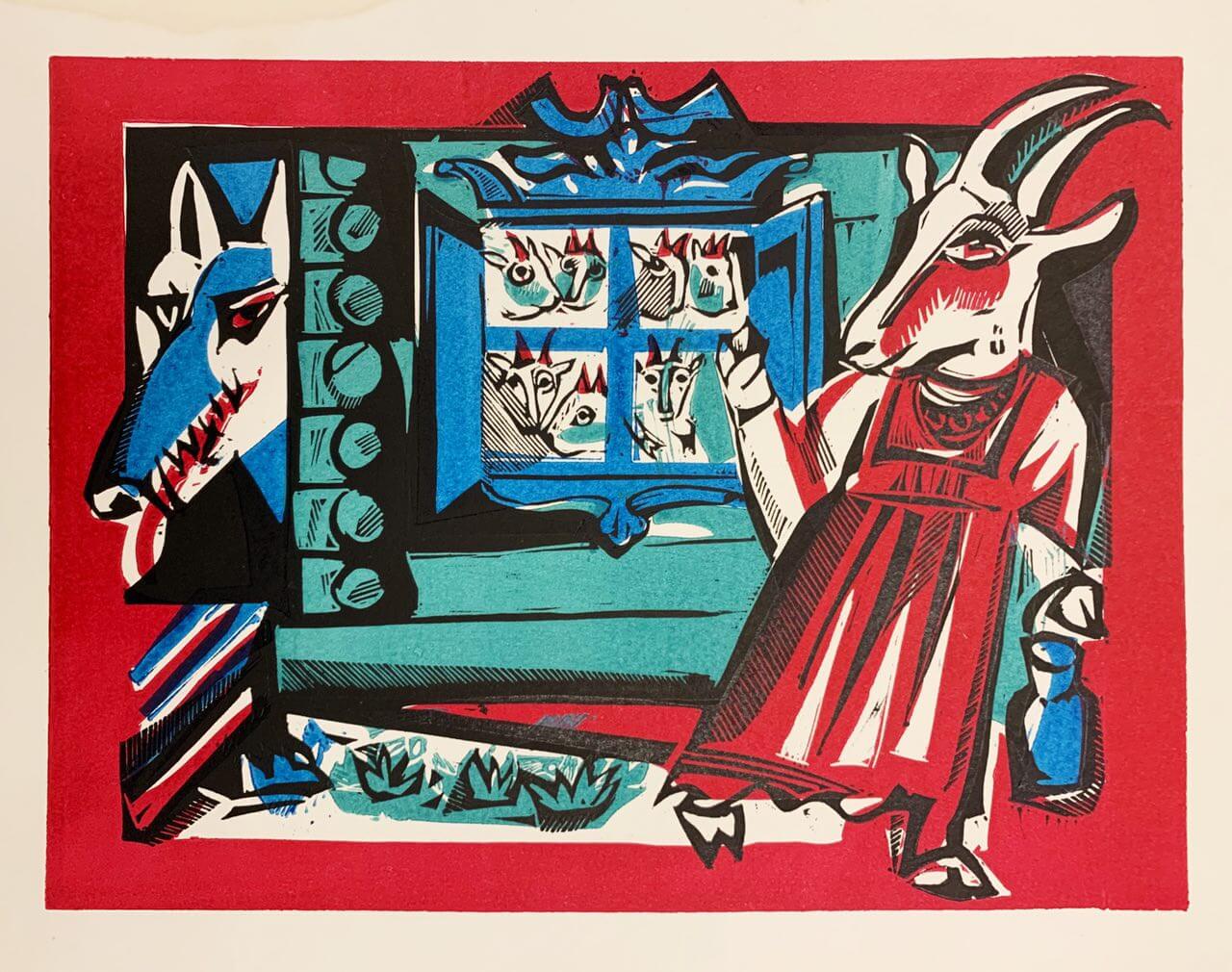Curated by Pavlo Gudimov, Polina Baitsym, Oleh Hryshchenko
The Dytvydav exhibition project presents the current findings of the research on the children’s book graphics in Ukraine from the years of the Thaw until the Independence years. This became possible, first of all, because of the incompatibility of the state policy of art censorship with the specifics of working with children’s audience. Indeed, since 1934, the work of Ukrainian artists had been governed by the doctrine of Socialist Realism characterized by the requirement of ‘realistic image’ in creative work no matter what topic it was. However,it was hard to apply this requirement to illustration of children’s literature, which includes fairy-tale and fantastic worlds. So, it was the children’s illustration where Ukrainian artists were able to embody true artistic experiments.
The curators of the Dytvydav exhibition seek to draw the attention of the general public to the less spoken aspect of the development of Ukrainian children’s illustrations, which is a prerequisite for a critical rethinking of the legacy of Ukrainian artists who worked in the Soviet period.
The Dytvydav exhibition consists of original illustrations by more than twenty artists, including Volodymyr Melnychenko and Ada Rybachuk, Heorhiy and Olha Yakutovych, Nina Denysova, Ivan Ostafiychuk, Nadiya Lopukhova, Nina Bozhko, and Yuriy Charyshnikov. The exhibition focuses on publications for children, but is not limited to book graphics, and includes the works created for designing kindergartens and schools. The works presented within the exhibition have been stored in private archives for more than half a century; some of them have never even left art workshops.
The exhibition raises a concern of the simplified perspective on artistic phenomena in Soviet Ukraine, which resulted in indiscriminate rejecting the artists’ best practices back at the time and setting the fragmented vision of the Ukrainian artistic environment. The selected artworks are an example of how the Ukrainian artists managed to avoid the ideological burden in their own creative work and oppose the principles of Socialist Realism, in particular, ‘partisanship’, ‘folk character’, ‘class character’, and ‘ideological commitment’ in art.
The research which the exhibition is based on unites monographic studies and the institutional history of the artistic sphere, therefore the exhibition additionally presents audiovisual materials and video interviews with artists or their descendants who tell about both stories of creating particular books and the specifics of the artists’ cooperation with publishing houses.
